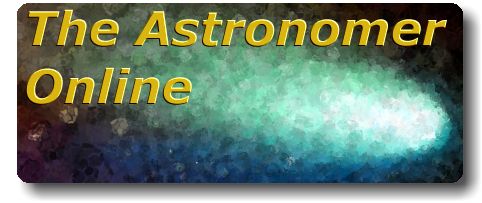 |
Although I can't quite squeeze all the Moon into a 35mm frame
(F=105.8-inches) I am quite pleased with the image sharpness. I set the
drive to track the Moon rather than 63Gem, and it seems to have worked.
10-inch f/10.6 Calver, & Elite 400 uprated to ASA800. Chris Lord.
|
 |
This is a composite of four exposures taken on Fuji Sensia 200 film using a
0.30m, f/5.25 Newtonian. Exposures range from 1/500s for the partial phase to
20sec for totality. Nick James.
|
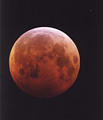 |
Photographed through an Intes 150mm diameter, 1500mm focal length, f/10,
Maksutov-Cassegrain telescope at prime focus with a Practika
MTL-5B SLR camera body using Kodak 400 ISO colour print film for an
exposure of 40 seconds from 20:32:00 to 20:32:40 UT from Mumbai city. Star
to the top right corner is Delta Geminorum. Aadil Desai, Secretary of
the Amateur Astronomers' Association (Bombay).
|
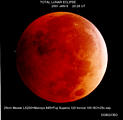 |
This image was taken with a Meade 25cm at f/10 on 120
format film. Denis Buczynski.
|
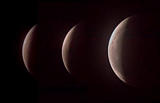 |
Digital camera shots at the end of totality. Kevin Smith.
|
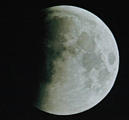 |
1855 1/500th Kodak Royal Gold 100. Martin Mobberley
|
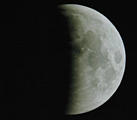 |
1910 1/250th Kodak Royal Gold 100. Martin Mobberley
|
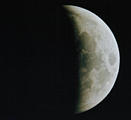 |
1918 1/125th Kodak Royal Gold 100. Martin Mobberley
|
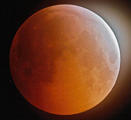 |
1948 6 secs Kodak Royal Gold 100. Martin Mobberley
|
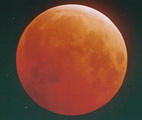 |
2020 10secs Kodak Royal Gold 100. Martin Mobberley
|
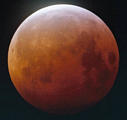 |
2054 4 secs Kodak Royal Gold 100. Martin Mobberley
|
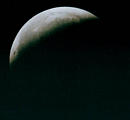 |
2111 1/125th Kodak Royal Gold 100. Martin Mobberley
|
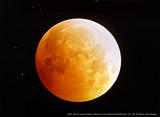 |
This image was taken during totality on Fuji Sensia 200 film using a
0.30m, f/5.25 Newtonian. Exposure was approximately 20 sec. Nick James.
|
 |
This composite is made up from images framegrabbed from a video made using a
Sony TR-3100 Hi-8 camcorder. Nick James.
|
 |
These two pictures were taken with Kodak Gold 200.
Both photos suffered from the presence of high cloud: in the case of
the photo of totality you can see the resulting scattered light near the
bright limb - in the case of the lunar halo it is a little more obvious!
Graeme Waddington
|
 |
I was particularly interested to see what time last shadow contact
occurred to the naked-eye (through the cloud I judged it to be about 2
mins after U4, although don't treat this estimate seriously due precisely
to the amount of cloud present). Anyway, I managed to get a sequence
(all 1/125 sec) near U4 with my Canon 500mm mirror lens and attach the
result - which, if nothing else, shows the extent of the high cloud via
all the off-moon scattered light! Graeme Waddington.
|

